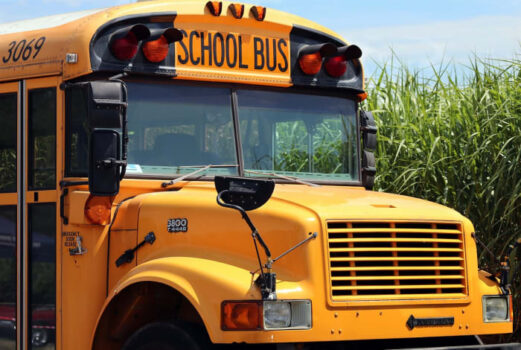The Virginia Department of Education has unveiled its final guidance on removing cell phones from classrooms across the Commonwealth.
The department has recommended a “bell-to-bell” policy, congruent with what it initially proposed in its draft guidance last month. Essentially with a “bell-to-bell” policy, students will be required to turn off their phones and put them away from the moment the initial bell rings to start the school day to the moment the dismissal bell rings at the end of the academic school day. This includes both lunch and time in between class periods.
This comes after the department received close to 6,000 public comments and feedback during engagements, including 21 stakeholders convenings and public Commonwealth Conversations with more than 1,160 Virginians.
What does this look like?
Elementary schools:
If a parent decides that an elementary student should bring a cell phone or personal electronic communication device to school, the device must be turned off and stored away from the student during the school day.
What about in emergency scenarios? Students must use school-based communication tools and platforms (whether in the office, classroom, or other centralized location) to communicate non-emergency needs with parents
Middle schools:
If cell phones or personal electronic communication devices are brought to school, they must be stored and turned off during the bell-to-bell school day.
What about in emergency scenarios? Students must use school-based communication tools and platforms (whether in the office, classroom, or other centralized location) to communicate non-emergency needs with parents.)
High schools:
If cell phones or personal electronic communication devices are brought to school, they must also be stored and off during the bell-to-bell school day.
What about in emergency scenarios? During bell-to-bell instructional time, students must use school-based communication tools and platforms (whether in the office, classroom, or other centralized location) to communicate non-emergency needs with parents.
Are there exemptions?
Yes, let’s take a look at some of the exemptions that were included:
Individualized Education Plan (IEP) or 504 plan: Students with disabilities may be required to use a cell phone or personal electronic device during the school day to accommodate their needs. This will need to be written into 504, IEP and/or individualized health care plans.
Limited English Proficiency Plan: When adopting policies, schools should consider EL students with a documented language barrier who may need access to electronic devices to support their learning.
So, what’s next?
Now, school divisions will need to revisit and review the policies they currently have in place and adopt and implement cell phone-free education and bell-to-bell cell phone policies by Jan. 1, 2025.
As we’ve reported, cell phones in schools have been a big issue across the Commonwealth since Gov. Youngkin’s executive order. School systems in our region vary greatly when it comes to what’s allowed. You can find a full list of those current policies here.
The VDOE and its partner agencies said it will conduct a review process at the end of this school year to measure the guidance’s impact and consider opportunities for refinement and improvement.
Click here to see the Virginia Department of Education’s final cell phone-free education guidance.
Copyright 2024 by WSLS 10 – All rights reserved.









